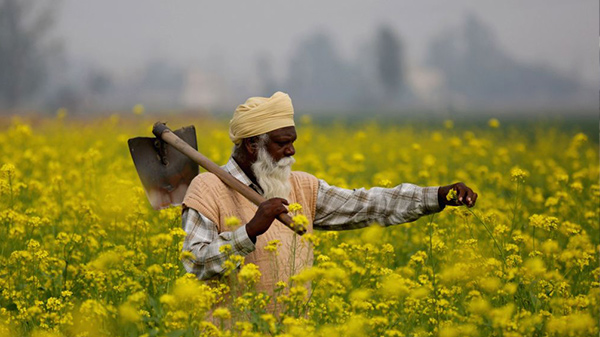A New Deal for Oilseeds

Despite being one of the largest producers of oilseeds in the world, India’s import dependence has doubled over the past few years owing to expanding consumption of edible oils and stagnating production of oilseeds. The country imported vegetable oils worth $10 billion in 2013-14 compared with $5 billion in 2007-08. If this growing demand has to be met without adding to the country’s current account deficit, oilseed production and domestic manufacture of edible oils have to be ramped up significantly.
Yields down
Farm yields of oilseeds such as groundnut, mustard, soyabean and sunflower are barely 50-70 per cent of global averages. Demand for edible oils is likely to increase from 18.3 million tonnes (mt) in 2013-14 to 25.7 mt by 2020-21, with imports expected to touch 15.8 mt rising 40 per cent from the current level of 11.2 mt. It is possible to address this alarming deficit through a set of policy interventions that will enable expansion of area under oilseeds cultivation, increase farm productivity, and improve value-addition within the country.
Lack of incentives
The farmer gets no incentive to invest in oilseeds, in competition with cheap imported oils in the absence of any import restrictions. The recent removal of export duty on palm products by Malaysia and Indonesia to reduce their inventory has resulted in a spike in imports and a resultant downward spiral of domestic prices, adding to the woes of the farmer. India’s import of vegetable oils is expected to touch a record 12.3 mt in the current year. Avoidable costs such as multiple handling due to APMC regulations, mandi cess, etc make domestic manufacture of edible oil an expensive proposition, limiting the scope for value-addition.
Strategies suggested
To meet this challenge, CII has recommended a three-pronged strategy:
One, raising farm productivity through a complete package of practices i.e. new technology, quality inputs and farm-extension services; and linking farmers effectively with markets. The Integrated Scheme for Oilseeds, Pulses, Oil Palm and Maize (ISOPOM) and National Mission on Oilseeds and Oil Palm (NMOOP) need to focus especially on increasing availability of high quality seed material to the producers. The private sector can focus on other inputs, and extension services.
Two, farmers need to be incentivised to undertake oilseed cultivation through higher price realisations. This can be done by raising import duties to bring prices on parity with domestic cost of cultivation. In due course, as the productivity improvement measures succeed, Indian prices also will be globally competitive. Based on recommendations from CII and other stakeholders, the Government has increased import duty on crude oil to 7.5 per cent from 2.5 per cent and that on refined edible oil to 15 per cent from 10 per cent.
Looking at the future price trends, there is room for further increase in rates, without hurting the consumer interests. In any case, the bound rates under WTO are also far higher than the current levels. The additional revenue generated can also be ploughed back into increasing oilseed productivity. There is also a need to lower transaction costs in the domestic value chain by lowering the mandi cess to a nominal 0.5 per cent. Reforming APMC Act to allow farmers to sell directly to manufacturers at their factories or warehouses will also fetch them better returns by reducing unwarranted multiple handling costs.
Three, increasing acreage of high oil content oilseeds is another key requirement. Cultivating more mustard in Punjab and palm in coastal areas can be explored. Between Punjab and Haryana, wheat is cultivated on some 6 million hectares. Part of this could be redirected towards mustard to meet the edible oil demand. This will also help the situation of depleting groundwater tables in these States. More wheat can be grown in the eastern parts of the country.
The area under oil-palm cultivation can also be increased to provide a rich source of edible oil and crude palm oil, which are widely imported. The Government has identified 19.30 lakh hectares as suitable for plantations. However, oil-palm is cultivated on only about 2 lakh hectares despite two decades of effort. Moreover, a major part of these plantations are still pre-mature and are yet to yield oil-palm. Declaring oil-palm as a plantation crop, along with policy support to allow better germplasm import can attract more investments into the sector.
The rich agro-climatic conditions of India offer an opportunity to produce a wide range of oilseeds globally competitively, when nurtured with the right policy environment. There is no reason why the country should remain an importer of edible oils for all times to come.
Published in The Hindu Business Line at
http://www.thehindubusinessline.com/markets/commodities/a-new-deal-for-oilseeds/article6902484.ece










